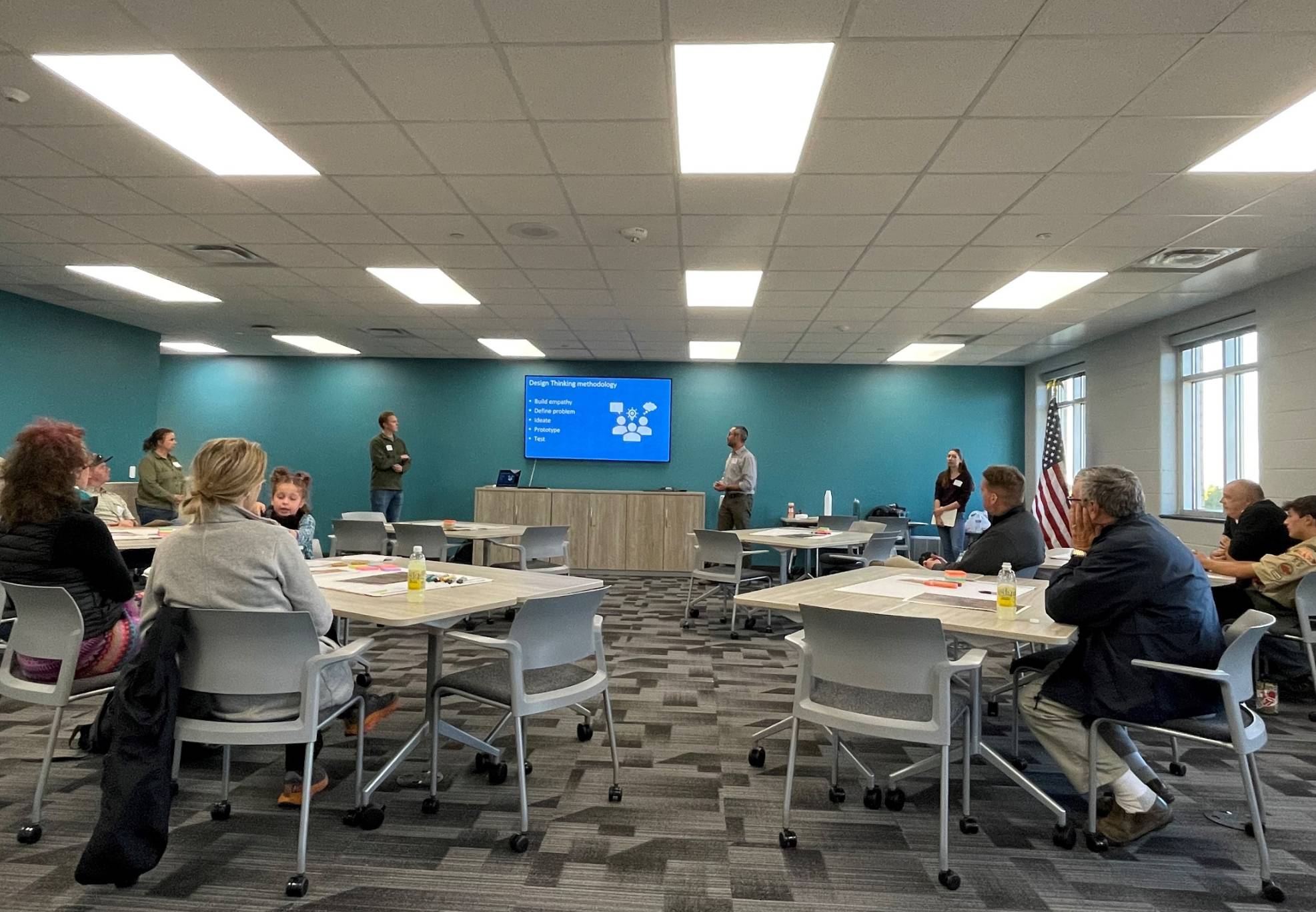A group of interested Dodge County residents attended the initial planning meeting Sept. 29 for the county’s new 32-acre park on land which serves as a buffer near the county’s Transfer Station/Recycling Center. To take a survey about ideas for the park and its amenities visit here.
The survey was a joint effort amongst staff members from the University of Minnesota’s Center for Sustainable Building Research, the U of MN Extension Southeast Regional Sustainable Development Partnership, and Dodge County.
A free, informational, virtual session about the park will be held at noon on Oct. 28. Please join the discussion by registering here for this session. If you are unable to attend, the session will be recorded and uploaded to the Dodge County website and it will also be sent out to any one that registers for the event too, so register even if you don't think you can attend the session 'live.'
How did the idea for the park come about? The desire for more natural and recreational areas in the county was noted during the recent comprehensive plan update. Bearing that desire in mind, the County Commissioners gave the go-ahead for a public park on land east of the county Transfer Station/Recycling Center. The parcel is designated as a buffer to the Transfer Station facility and cannot be developed. Public input was gathered for ideas for that park at the meeting Sept 29. A group met at the new ZED building to kick around ideas for the land which can be seen from that building at 2002 Mantorville Ave. N.
A structure to be used as an environmental learning center is also planned for the park. That headquarters could be used for children’s activities and as a headquarters for all sorts of eco-friendly projects.
County Project Manager Melissa DeVetter explained, “Ideally, this environmental classroom would be built as a ‘net zero energy’ structure and, where feasible, usable recycled/reclaimed materials - which might otherwise end up in a landfill - would be used for its construction.”
At this first planning meeting, many suggestions were put forth for the park and the building including a butterfly garden, a wetland, cross country ski trails, drying racks for beneficial plants, an astronomy viewing area, using passive solar and a heat pump arrangement to heat and cool the building, solar panels for electrical needs, a rain garden to demonstrate stormwater treatment, a plant/pollinator identification garden, a sculpture, exhibits, and the list goes on.
Already, native prairie plants have been seeded on a portion of the land and students from the Triton and Kasson-Mantorville schools have planted trees on part of the 32 acres.
Some funding is available for the building and Melissa explained, “Dodge County received a grant from the University of Minnesota Extension’s Southeast Minnesota Regional Sustainable Development Partnership for the purpose of designing the new environmental classroom building. We are excited and honored to be working with Richard Graves, Director of the Center for Sustainable Building Research and an associate professor in the College of Design at the University of Minnesota; Research Fellow Dan Handeen and Graduate Research Assistant Madeline Juve on this project.” The Center is a unit of the College of Design based on the University of Minnesota Twin Cities campus.
As part of the planning process, Melissa explained, public meetings were scheduled to gather ideas about what Dodge County citizens want in this facility.
What’s next?
Richard, Dan, Madelyn and their colleagues will take all those ideas, sift them down to a manageable collection. They plan to show schematic design proposals in December and are scheduled to issue a final design and report in January.


